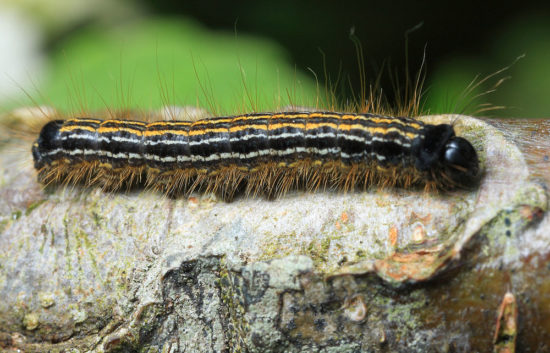
Cooperative Extension prohibits discrimination and harassment regardless of age, color, disability, family and marital status, gender identity, national origin, political beliefs, race, religion, sex (including pregnancy), sexual orientation and veteran status. Be sure to obtain current information about usage regulations and examine a current product label before applying any chemical. Individuals who use agricultural chemicals are responsible for ensuring that the intended use complies with current regulations and conforms to the product label. A&T State University nor discrimination against similar products or services not mentioned. The use of brand names and any mention or listing of commercial products or services in this publication does not imply endorsement by NC State University or N.C.

Recommendations for the use of agricultural chemicals are included in this publication as a convenience to the reader.

In August and September, the mature caterpillars burrow into the soil 2 to 4 inches and pupate to spend the winter there. When disturbed the whole group often elevates both ends of the body, a behavior that predators might find intimidating. The larvae typically feed in groups near the ends of the twigs and branches. Females lay their tiny, white eggs in masses - sometimes a 100 or more - on the lower surface of leaves. Moths are reddish to cinnamon brown, and the forewings have irregular, fine dark lines. Azaria caterpillars are gregarious creatures, and c. Male moths are sometimes attracted to lights. Although, when threatened, these black and yellow caterpillars raise their bodies and make a C-shape.

Moths emerge from the soil during June and July.
BLACK CATERPILLAR WITH YELLOW STRIPES WITH BLACK HEAD PATCH
Behind the head is a bright yellow to orange patch from which this insect's common name is derived. The body is covered by long, fine, white hairs. Young caterpillars are small green worms that grow into medium orangish worms with yellow stripes and then into large (about 2 inches long), black- and yellow-striped caterpillars with black heads and reddish prolegs. The yellownecked caterpillar, Datana ministra, is one of the most frequently reported pests of oaks, birches and other hardwoods. and yellow stripes run the length of the body with a large red spot on the head. Description and Biology Skip to Description and Biology This famous caterpillar is plump with black, white, and yellow bands.


 0 kommentar(er)
0 kommentar(er)
